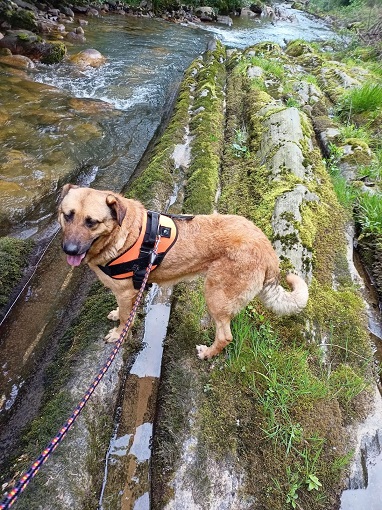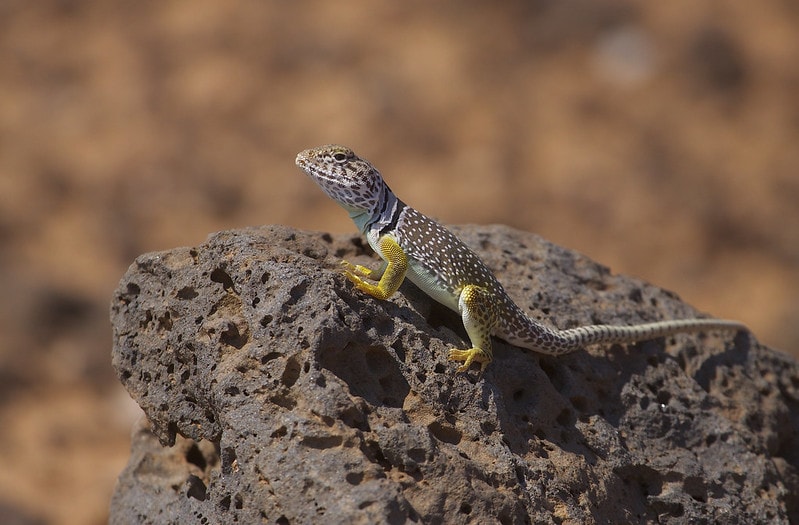

Texas is the largest state in the US—and it’s teeming with wildlife of all kinds. Due to the hot, humid temperatures, it’s no wonder there are so many species of lizard living in the great state. The blazing sun is perfect for lizards to bask and soak it all up.
Lizards are found in every region of Texas—from Amarillo to Laredo. Each has its own preference for living situations, requiring different environmental factors. Fortunately, none are poisonous. Let’s take a look at each one and get to know them a little better.

11 Lizards Found in Texas
1. Anole
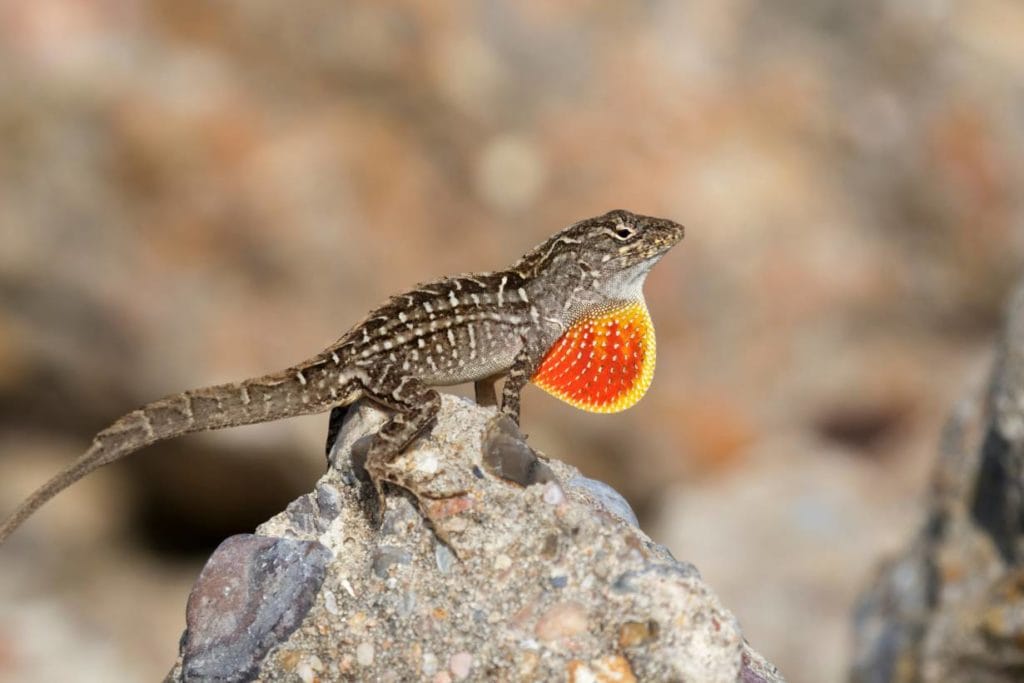
| Species: | Anolis |
| Longevity: | 5 years |
| Good to own as a pet?: | Yes |
| Legal to own?: | Yes |
| Adult size: | 8 inches |
| Diet: | Carnivorous |
Anoles are common lizards found scattered all throughout Texas. These little guys are one of the most prevalent species of lizard in North America. They are ubiquitous in the wild, but they’re commonplace in the pet trade, too. The brown anole is considered an invasive lizard in Texas.
In the wild, anoles spend most of their days in shrubs and other greenery. Because of their environmental needs, you can find them in your backyard garden snacking on various insects. While an anole’s diet mostly consists of crickets, grasshoppers, moths, and spiders—though they sometimes supplement with fruit.
2. Texas Horned Lizard
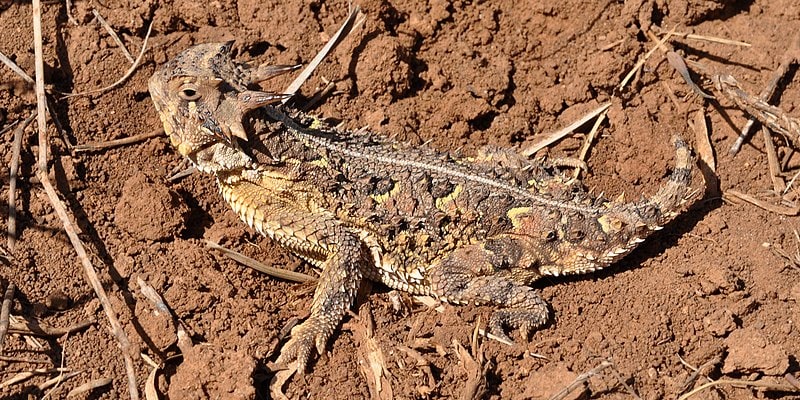
| Species: | Phrynosoma cornutum |
| Longevity: | 7 years |
| Good to own as a pet?: | No |
| Legal to own?: | No |
| Adult size: | 5 inches |
| Diet: | Carnivorous |
The Texas horned lizard, or horny toad, is quite an interesting character. This lizard is one of 14 horned species that exist—but they are a look-but-don’t-touch type of lizard. They are a threatened species, meaning their numbers have dwindled with time. You can help preserve them by leaving them in nature, where they belong.
Texas horned lizards love sparse vegetation on sandy or soil-based terrain. They love basking in the toasty Texas sun and will burrow and dig for nesting and hibernation purposes. They mainly eat harvester ants and spiders—which are not commercially available in pet shops.
3. Texas Spiny Lizard
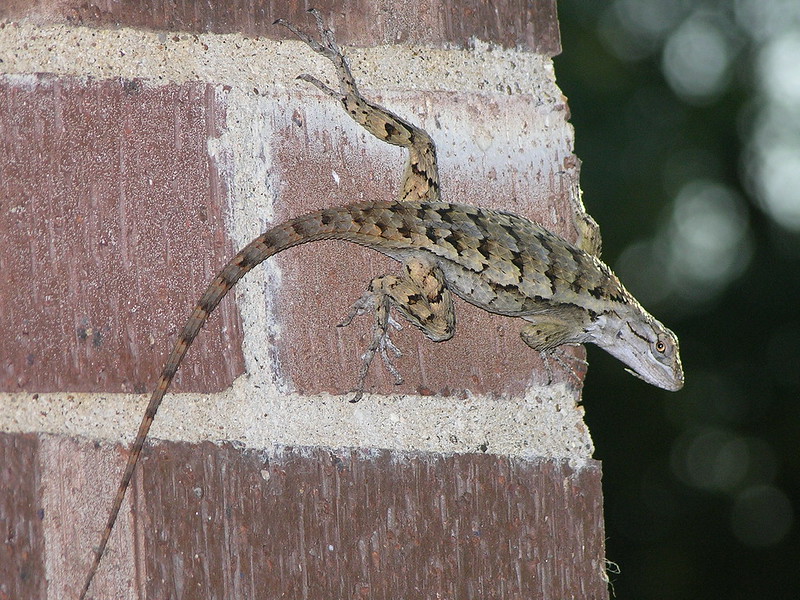
| Species: | Sceloporus olivaceus |
| Longevity: | 2 years |
| Good to own as a pet?: | Yes |
| Legal to own?: | Yes |
| Adult size: | 11 inches |
| Diet: | Carnivorous |
The Texas spiny lizard is a sneaky little reptile that shies away, spending most of its time camouflaged among nature. These guys spend most of their day up in the trees, blending in with the bark. They are one of 10 spiny species that exist in Texas.
Texas spiny lizards love eating insects of all sorts—not limited to beetles, crickets, grasshoppers, and even wasps. These lizards are in the pet trade, so you are allowed to own them as pets. They are sought after because of their unique appearance. However, it isn’t recommended you take one from the wild.
4. Eastern Collared Lizard
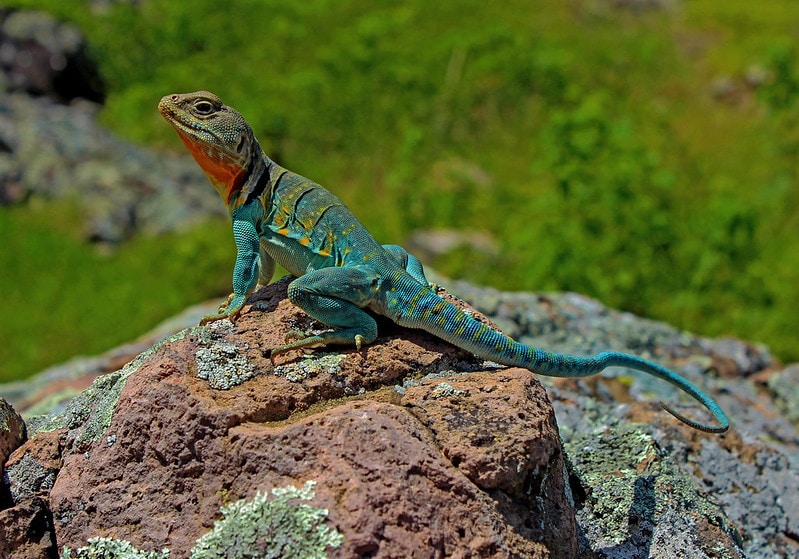
| Species: | Crotaphytus collaris |
| Longevity: | 8 years |
| Good to own as a pet?: | No |
| Legal to own?: | Yes |
| Adult size: | 10 inches |
| Diet: | Carnivorous |
The Eastern collared lizards come in a variety of gorgeous color patterns that are typically vibrant and beautiful. But they are distinguishable by the two black rings around their neck. You can technically keep these creatures as pets, but they are hard to care for in captivity.
This species loves rocky territories, but they also inhabit areas with high vegetation. Their diet mainly consists of grasshoppers, crickets, and even other lizards. One super cool thing about this lizard is its ability to run on its hind legs.
5. Mediterranean House Gecko
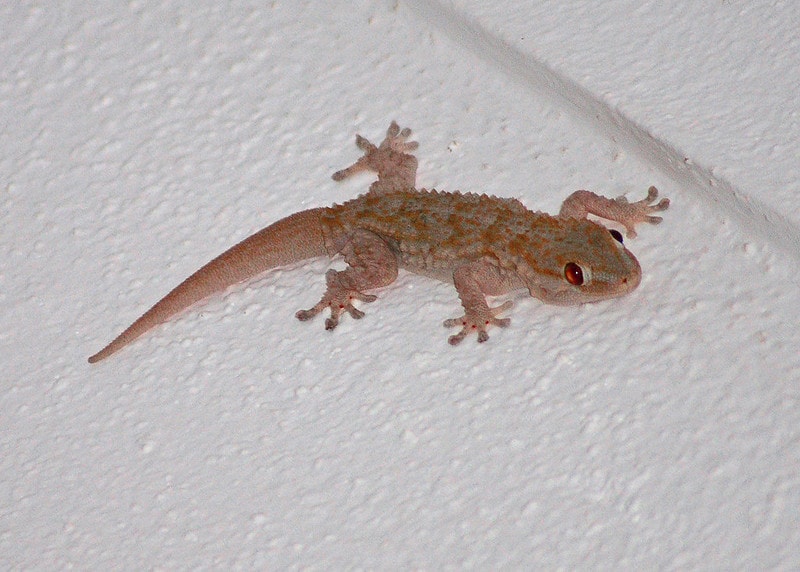
| Species: | Hemidactylus turcicus |
| Longevity: | 9 years |
| Good to own as a pet?: | Yes |
| Legal to own?: | Yes |
| Adult size: | 5 inches |
| Diet: | Carnivorous |
Mediterranean house geckos are very common in the wild, but equally so among reptile enthusiasts. They are a very easy pet to own, making them great for beginners and novice owners alike. In fact, their other name is ‘house gecko’, meaning that they purposefully come into your home to live. They are also among the smallest lizards that live in Texas.
In addition to industrialized housing, these geckos love rocky terrain, cliffs, and caves. These lizards love crickets, roaches, and many other insects they find in the wild. In captivity, they are super easy to feed, eating mealworms and super worms.
6. Skink
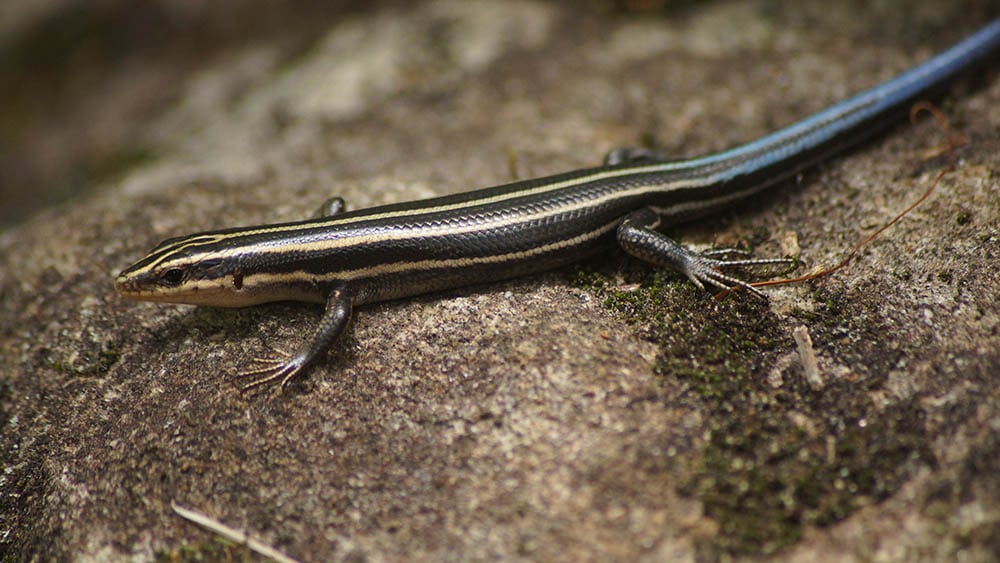
| Species: | Scincidae |
| Longevity: | 6 years |
| Good to own as a pet?: | Sometimes |
| Legal to own?: | Yes |
| Adult size: | 8 – 30 inches |
| Diet: | Carnivorous |
There are several skink species in Texas, such as the common five-lined skink, little brown skink, broad-headed skink, great plains skink, coal skink, and four-lined skink. Each one varies in appearance slightly, but they generally have thick bodies and broad skulls.
Skinks have a hefty diet, snacking on millipedes, larvae, grasshoppers, and caterpillars. However, they can eat larger prey, too—like mice, frogs, and other lizards. Skinks enjoy soft, damp soil and areas with lots of coverage.
7. Texas Alligator Lizard
| Species: | Gerrhonotus infernalis |
| Longevity: | 6 years |
| Good to own as a pet?: | Yes |
| Legal to own?: | Yes |
| Adult size: | 18 inches |
| Diet: | Carnivorous |
The Texas alligator lizard lives up to its name, resembling their alligator relatives from afar. They are slow movers with impeccable vision. They are not only the largest lizard in Texas but one of the biggest in the world.
These lizards love rocky terrain where they can bask in peace. Due to their size, they hunt larger animals—like birds and rodents—but will eat insects as juveniles.
8. Slender Glass Lizard
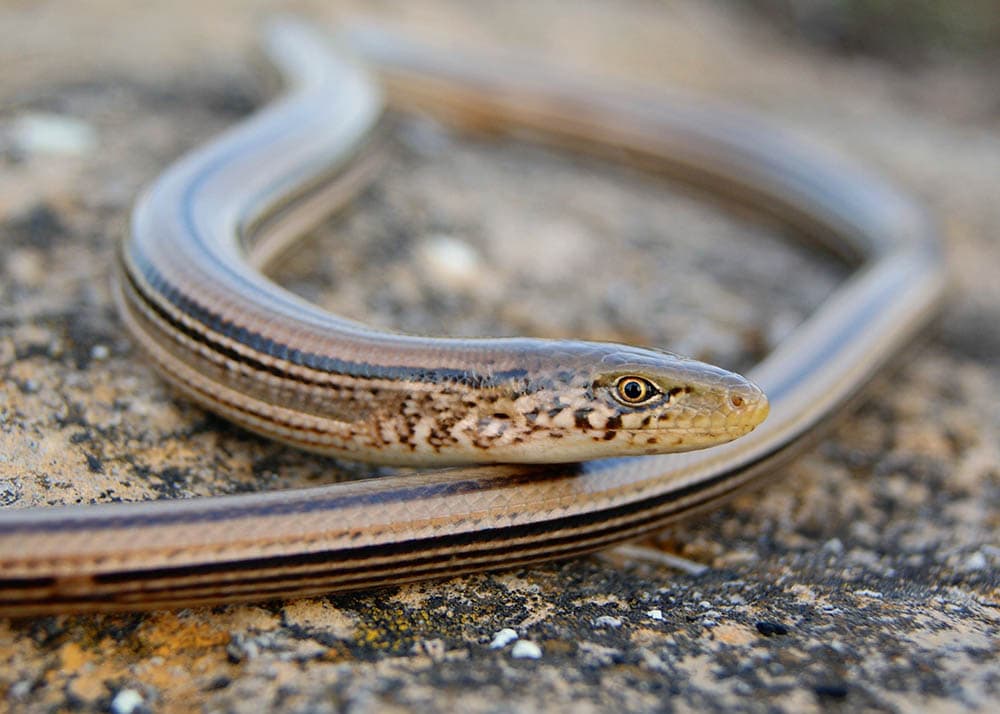
| Species: | Ophisaurus attenuatus |
| Longevity: | 10 years |
| Good to own as a pet?: | Sometimes |
| Legal to own?: | Yes |
| Adult size: | 42 inches |
| Diet: | Carnivorous |
The slender glass lizard is quite a big lizard in Texas, reaching lengths of 42 inches at times. They are legless, meaning they take on the look of a snake with some notable differences—like movable eyes and external ear openings for hearing.
These lizards, like many others, can break off their tails as a defense mechanism. The removed tail wiggles to distract predators so they can make a clean escape. They typically eat small snakes, other lizards, and anthropoids.
9. Prairie Lizard
| Species: | Sceloporus undulatus |
| Longevity: | 5 years |
| Good to own as a pet?: | Yes |
| Legal to own?: | Yes |
| Adult size: | 7 inches |
| Diet: | Carnivorous |
The prairie lizard is a fascinating specimen found all over Texas and in neighboring states. They get their name because they explore grasslands and meadows and love wooded areas—touting perfect camouflage to blend in. You can find them out on a fence, garden, or wood stacks, too.
These lizards spend their days basking in the sun, but once evening hits, they’re completely active again. They prey on insects and spiders as a primary source of their diet.
10. Six-Lined Racerunner
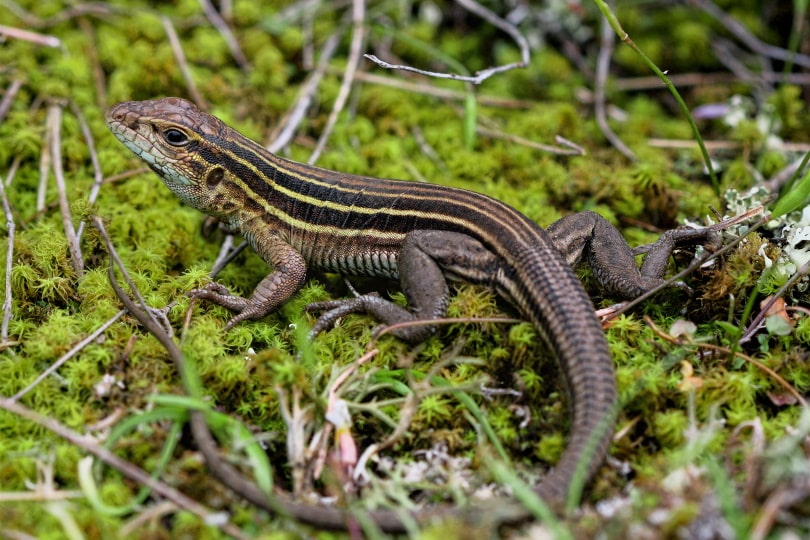
| Species: | Aspidoscelis sexlineata |
| Longevity: | 5 years |
| Good to own as a pet?: | No |
| Legal to own?: | Yes |
| Adult size: | 9 inches |
| Diet: | Carnivorous |
The six-lined racerunner is a speedy little lizard found in southern US states and Mexico. They can run up to a whopping 18 miles per hour, so catching one of these guys is next to impossible, but it serves them well to catch prey or avoid becoming it.
These whiptail lizards are active on the toastiest of days, moving in the heat of the blazing sun with no issues. They eat a wide variety of insects and invertebrates.
11. Texas Banded Gecko
| Species: | Coleonyx brevis |
| Longevity: | 8 years |
| Good to own as a pet?: | Yes |
| Legal to own?: | Yes |
| Adult size: | 4 inches |
| Diet: | Carnivorous |
The Texas banded gecko is very recognizable due to the horizontal, thick lines down its body. They stay very small—and they can live up to 25 whole years, though they likely won’t survive that long in the wild.
This gecko has a unique defense mechanism where it will point its tail like a scorpion to confuse and ward off predators. If it doesn’t work, they will drop their tail and scurry away. They are nocturnal lizards that hunt small insects and termites.

Conclusion
Texas is certainly the right environment for lizards to thrive. It has hot, sultry summers and sparse vegetation that lizards love to explore. These unique creatures vary in size, appearance, and temperament. Plus, they have lots of amazing adaptations to thrive.
Which one of these fascinating reptiles is your favorite Texan lizard?
Looking for more? Try our articles on:
Featured Image Credit: Gregory Smith, Flickr CC SA 2.0 Generic (Eastern Collared Lizard (Crotaphytus collaris))

Ashley Bates is a freelance dog writer and pet enthusiast who is currently studying the art of animal therapy. A mother to four human children— and 23 furry and feathery kids, too – Ashley volunteers at local shelters, advocates for animal well-being, and rescues every creature she finds. Her mission is to create awareness, education, and entertainment about pets to prevent homelessness. Her specialties are cats and dogs.

